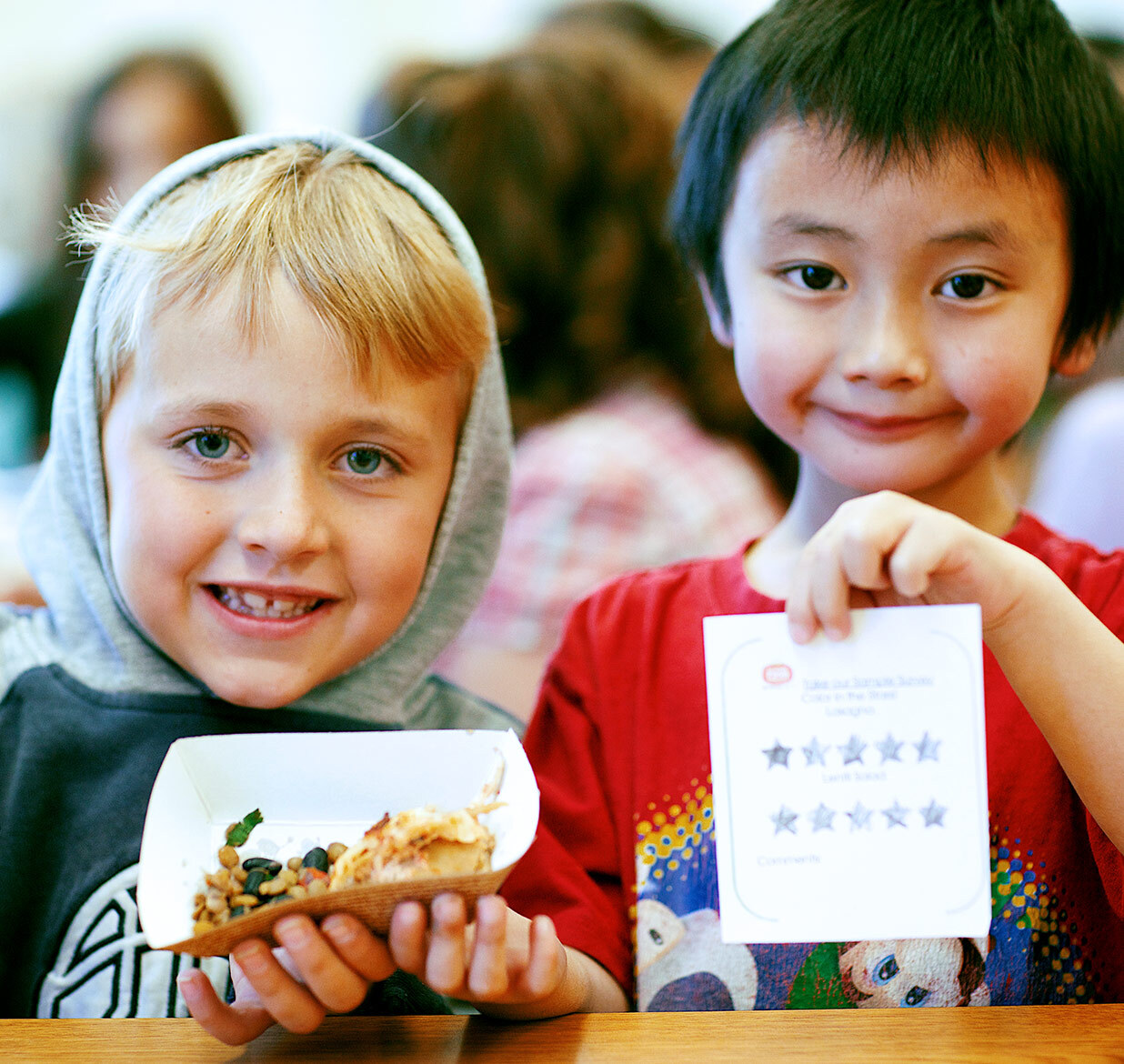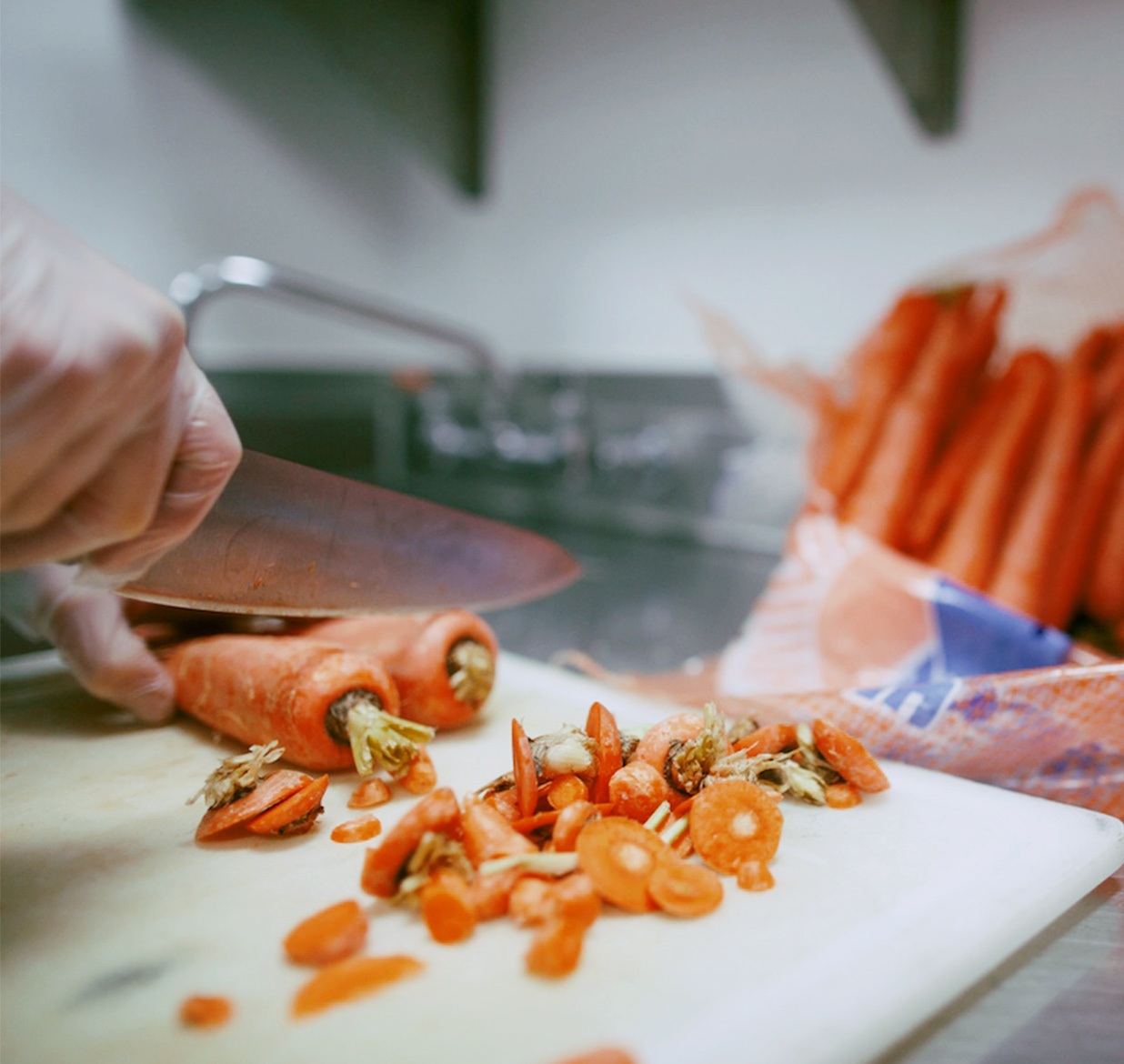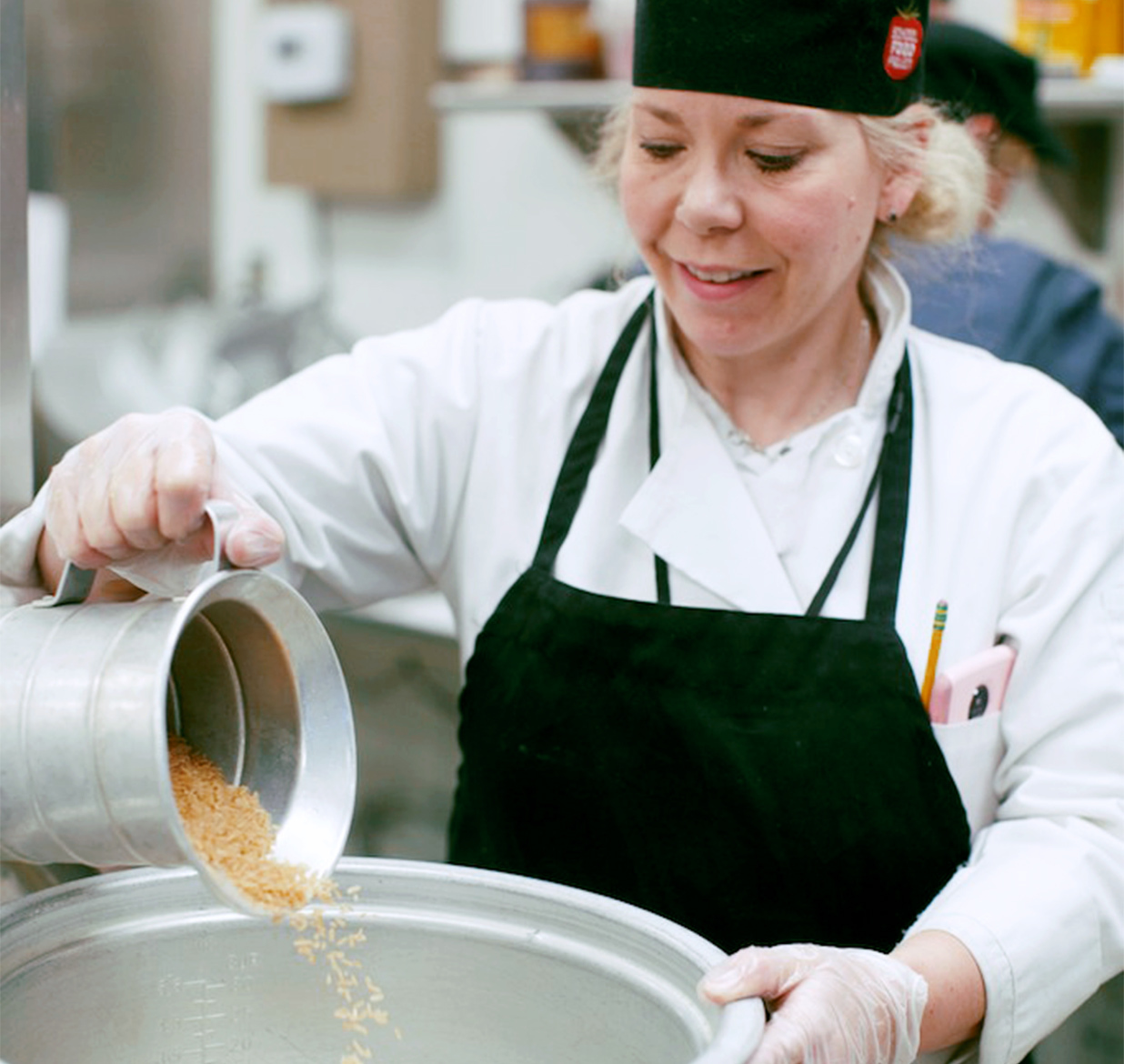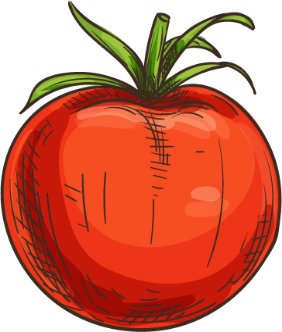
Social Media & Digital Marketing Toolkit
Social media is a highly effective tool for growing public awareness and engagement in your program. Platforms like Facebook, Instagram, and Twitter allow district food service programs to stay connected to multiple stakeholders and audiences on a consistent basis.

Social Media & Digital Marketing Toolkit
Social media is a highly effective tool for growing public awareness and engagement in your program. Platforms like Facebook, Instagram, and Twitter allow district food service programs to stay connected to multiple stakeholders and audiences on a consistent basis.
Why Social Media is Important
In District Communications, we cover how a school meal program can utilize different marketing strategies, like email newsletters or posters and signs in the cafeteria. Paired with social media, these tactics can help build a following for your brand and increase enthusiasm for the program.
Social media is a way for the program to use well-trafficked platforms to share bite-sized updates and highlights with families, faculty, staff, administrators, and partners. Regular communication can improve trust, strengthen partnerships, and even increase participation for the program. In this section, we will dive into all you need to know to build a social media plan and create interesting and relevant content.
Setting Goals
Social media can help highlight your achievements and milestones for the larger school community, but it is important to be strategic about the information you want to share. We recommend thinking about your social media as a way to tell your story of transitioning to healthy, scratch cooked school meals.


Setting Goals
Social media can help highlight your achievements and milestones for the larger school community, but it is important to be strategic about the information you want to share. We recommend thinking about your social media as a way to tell your story of transitioning to healthy, scratch cooked school meals.
To identify themes for your social media marketing efforts, review the mission and vision statements for the program. What are the main goals? What are the actions the program is taking to meet those goals?
For example, if you are working on serving more fresh produce this year, social media can be an outlet to talk about fresh produce and child nutrition, local producer partnerships, and salad bar implementation.
Social media can highlight:
- Upcoming healthy menu items and generate excitement for the program
- New and key partnerships, including local or seasonal ingredients
- Scheduled lunchroom education activities
Building a Social Media Plan
It can be tempting to only post on social media when there is a new update to share. However, consistent posting to social media is key to getting in front of your audience. Just like managing procurement or financials for your program, planning is essential to maintaining a social media presence that supports your mission and vision.
Determining Which Platform to Use
Now that you have defined the program goals for social media, the next step is to evaluate the different platforms and take inventory of the program’s previous social media engagement, if applicable. Having a successful social media presence does not mean that the program needs to be on every platform available. It is actually better to focus your time and energy on 1-2 platforms that suit your program’s needs. Each platform has its own strengths and weaknesses, however the platform you choose can help curate your content to better support the school meal program.
To this day, Facebook is still the largest social media platform with over 2 billion active users (¼ of the Earth’s population!). You can utilize Facebook to create an online community to market and inform families about your school food program.
Creating a business page is a great way to market your program, and can be helpful in cross-posting information from your school district’s website. Like most other social media platforms, Facebook gets the most engagement when information is paired with a striking visual (photo or video).
Instagram is a primarily visual platform. Its users skew younger, as 65% of Instagram’s user base is under 34. Successful Instagram accounts (many of which are “brands” or “influencers” promoting their business) that have lots of user engagement post frequently and authentically. Users respond best to a “human” approach to this platform — they should feel like they are checking up on a friend.
This platform works well for promotion and is a great way to highlight the food your program serves with photos and videos, or provide insights and showcase the personalities of your school food team.
Twitter is a quippy, information-driven platform that, like other platforms, allows for direct engagement with the communities your program serves. Twitter is a useful resource for gathering feedback from the community and sharing out school food resources. Photo and video sharing is available on Twitter as well. Engaging with other school food organizations on Twitter is key, as Twitter is used to share and interact with news and events in real time, and doesn’t always work well as a promotional platform.
As social media platforms go, TikTok is the new kid on the block. The platform skews younger (Millennials and Gen z), and provides an opportunity to directly connect with the communities your program serves. TikTok is visually-based and allows users to generate 1 minute videos and host live streams.
TikTok users love learning new things, which creates a great opportunity to “pull back the curtain” and showcase the process of making school food, touring your kitchen facilities, as well as highlighting the personalities of your staff.
Scheduling
Now that you have determined your goals and which platforms you will use, you can schedule your social media and digital marketing for consistent engagement with your audience.
Figure out what works best for you and your team - whether it’s creating content a week ahead of time or a month ahead of time. What’s important is that you are creating content ahead of time. You want your audience to be able to rely on you posting on a consistent schedule. Quality content over quantity of content is key here. We recommend posting no more than once a day, except for special circumstances, and focusing your energy on developing intentional content.
Even with the majority of your content schedule filled out in advance, there should still be room to change things around if needed and to add in timely and relevant content, such as news articles, policy updates, partner promotions, or exciting program updates. We recommend thinking about different themes for structuring your content and calendar. See the example structure below for ideas.
| Monday | Tuesday | Wednesday | Thursday | Friday |
|---|---|---|---|---|
| Program promotions (e.g. seasonal products, upcoming activities) | Partnership highlights | Behind-the-scenes at the school meal program (e.g. recipe development, preparing for a tasting) | Policy or news stories | What's on the menu next week |
Developing Content

Writing Engaging Content
When crafting the language and content for your social media channels, be sure it encompasses what your audience is interested in. This may take some time and a bit of trial and error but it’s important to include both promotional information and news that will keep your followers engaged.
We recommend starting out with information promoting the week’s menu. As you increase your following, you can add information about changes in the school meal program, like reducing added sugars in breakfast options or implementing salad bars, and even discuss larger news about school food and child nutrition.
Testimonials & Anecdotes
About Your Program
If you’re looking for ways to come up with your own testimonials and anecdotes, you could include a google form in your newsletter or even create a poll on your social media platforms, requesting healthy food advocates or school food professionals share their experience about school food and feature it in a blog or simple social media post. Directly asking for your audience to share on social media is also a great engagement tactic!
For example: Host a Photo of the Month contest where students, faculty and staff are challenged to post about their favorite menu item (including a picture). The school community can vote on the best photo using “likes” and “shares” and the winner will be featured in the next newsletter and have the photo displayed in cafeterias for the next month.
Success Stories
Another great way to gather testimonials and anecdotes is to stay connected to other school districts and the school food community by following their social media channels! By sharing other districts’ stories, you will be able to broaden your digital reach, grow a stronger connection with fellow districts working towards school food reform, and show your audience examples of what your program is trying to accomplish.


Facts and Figures
Sharing statistics with your audience can be exciting and a great way to gain rapport. Information about school food, child nutrition and your program’s work can reinforce support for the program’s mission and vision. However, it is important to always fact check information and ensure the content you are distributing is accurate. To do this, make sure that information is coming from a credible source, such as USDA, and stick to facts vs. opinions when promoting anything related to policy or hard numbers. Having typos, incorrect or misleading facts, or untruths in your social media posts could potentially damage your public reputation and credibility.
Partnerships
Highlighting partners not only shares the school meal program’s positive work, it can also strengthen your relationship and contracts with partners and vendors. Small and local businesses will appreciate the publicity, demonstration of ongoing support, and can use your posts to help build their business. Posting about and tagging key partnerships can expand your audience through the partner or vendor’s following. Sharing about these partnerships can strengthen your program’s brand and further prove your mission and values to your audience.


Policy and News
In addition to sharing stories, promotional content and highlighting other partners, it’s extremely important to keep your audience up to date with the latest policy changes and news around school food. If you are at all involved in school food reform, you likely know that there are many regulations and requirements involved. Posting about policy changes or updates is a great way to educate your audience members and potentially introduce them to unfamiliar topics. Make sure to tie this back to the impact on the program or school food in general. News articles tend to be a great engagement tool when you tag the source and all parties involved - just be sure to fact check and consider if the content could be at all controversial or a sensitive topic.
Privacy Compliance
Like any form of public communication, it is important to be respectful of others’ privacy and gain consent. Make sure to familiarize yourself with the school district privacy policy, which will include guidelines for taking and posting pictures with students, before sharing any content. In addition if you are scheduling a story, photo or video that includes external content, such as a photo from a news article, confirm whether you can utilize this content as your own and check with the source to credit or tag accordingly. Failing to confirm permission in advance is not only bad practice, but could result in further copyright issues and even legal complications.
Recommended Next Topic: District Communications
Explore all of the other district communications in which your program could be promoted, including a program website, newsletters, and a menu calendar.
Recommended Next Topic: District Communications
Explore all of the other district communications in which your program could be promoted, including a program website, newsletters, and a menu calendar.






